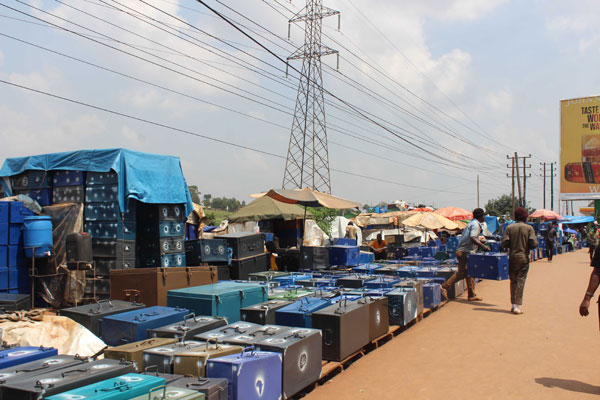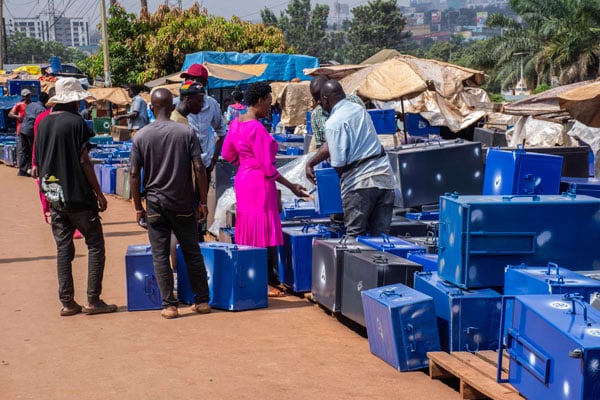
Ms Pauline Mujaasi, the proprietor of Skoolies, shares the benefits of shopping before the last-minute for back to school requirements. PHOTO/ Joan Salmon
|Markets
Prime
Preparing for back-to-school this December
What you need to know:
Here are some helpful tips to make back-to-school shopping less taxing—while keeping some cash in your pocket.
December is a high-spend month for most people and they are bound to spend a lot more than usual. However, in January, preparations to take children back to school must ensue. Without preparation, the month may seem longer than most.
Buying during December presents a better option for several reasons, one being that there is more disposable income. It even gets better for those whose jobs present them with bonuses. We share about the benefits of shopping early and how to go about it:
Ms Monica Kasirye Kavuma, a financial advisor at Financial Fitness Spa, says one could pay school fees in December rather than January to put one of the biggest items out of the way.
“In most schools, paying in full as the year starts seems the norm. Therefore, paying up when there is a bit more money at hand is easier than when one has spent most of it,” she says.
She adds that it would help to do the bulk shopping around this time. That includes paying up for uniforms, and the school essentials.
“The best time to do this is in the last week of December, after Christmas. That is because before Christmas, prices are inflated but they tend to go down thereafter, a period where the business people are only selling to earn a living,” Ms Kavuma says.
Pauline Mujaasi, the proprietor of Skoolies, says usually between November and December, some shops that stock school items give discounts to get rid of the old stock in preparation for new stock.
“Parents should, therefore, make use of this period to get very good deals on the school items,” she says.
Bulk buying
The last week of December is surely a wonderful time to also buy in bulk when prices are relaxed. Some of the items to stock up on include sugar, soap, and books.
“The best place to go is Kikuubo as it is the hub of wholesalers. That way, you can save up to 25 percent compared to one that shops from a supermarket,” Ms Kavuma says.
Adding, “While we love to buy cheaply, we must look for quality rather than quantity. That means being a careful and intentional shopper, not being in a rush so that you buy what will serve the intended purpose. That way, the item, such as shoes, socks, and bags can serve for a longer period.”
Buying before the January craze also helps to get all you need. Otherwise, in January, when everyone else is buying school items, the chances of some things running out of stock are high.
“For instance, it is possible to fail to get your desired shoe size when you buy late as many are looking at giving their child a new look and shoes complete the puzzle,” Ms Mujaasi says.
Just like with carpooling, people can enjoy economies of scale when they buy jointly.
“Get a family you work well with and merge your shopping lists to buy in bulk. It helps that there is a good relationship among the families to ensure that the purchase does not create any problems, such as one cheating the other by say, taking more than they paid for,” she says.
People can also target stores that stock several school items under one roof. Ms Mujaasi says that is the trick they have employed at her store, stocking on items such as school shoes, school bags, canvas shoes, swimming gear, and lunch bags among others.
“If you are buying several items in the same store, you have better bargaining power than if you bought from different shops. That speaks to more savings and a less strained budget,” she says.

Ronald Mwanja, a metallic case maker in Nakawa waits for customers. PHOTO/ JOAN SALMON
Multi-purpose items
Parents could also consider getting products which have multiple purposes. For example, some schools are flexible regarding school shoes and will allow their students a wider variety of shoes.
“In such a case, you could buy shoes that can double as maybe church shoes. Therefore, as parents buy new church shoes, these could also be used as the term starts hence saving on buying another pair of shoes,” she says.
Parents should ensure they buy the right shoe sizes, and Ms Mujaasi says the right size has some space for the child’s growing foot yet not too much for the foot to wobble within.
“The standard space is not bigger than the width of your thumb. That accommodates the child’s next size but is not too big to pose a tripping danger. That extra space means you will not be buying shoes every term seeing that the child is growing,” she says.
Adding, “Engage the store attendants on the kind of items to buy. If the child is very active, the ideal shoe may not be the same as one that is not. That advice will save the heartbreak of a torn shoe owing to excessive playing hence replacement. The other item is a school bag where some children carry more books than others. In the latter, a stronger shoe is more suited and the attendant can help you make the choice.”
When buying presents, rather than buying something fancy, parents can consider buying items for their children which they know could also be used for school.
“It could be a school bag or even shoes. That serves two purposes hence saving the budget,” Ms Mujaasi says.
It also helps to buy around this time because the lines are shorter, and the congestion is less seeing that many are still in the festive mood. Moreover, the attention you get from the attendants is less divided as is the case during the back-to-school peak shopping season.





